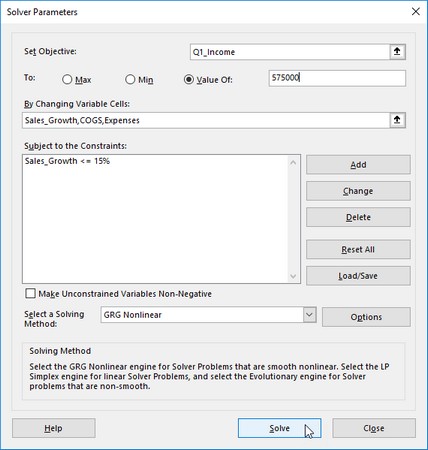

If you do, you can enable iterative calculations, but you need to determine how many times the formula should recalculate. Unless you're familiar with iterative calculations, you probably won't want to keep any circular references intact. This can slow your computer down, so iterative calculations are usually turned off in Excel. While no other workbooks are open, you open a workbook and then create a circular referenceĪt times, you may want to use circular references because they cause your functions to iterate-repeat until a specific numeric condition is met. You open a workbook that contains a circular reference You close all workbooks, create a new workbook, and then enter a formula that contains a circular reference You remove all circular references in all open workbooks, and then create a new circular reference You create the first instance of a circular reference in any open workbook The following list shows some, but not all, the scenarios in which the warning message will appear: Important In many cases, if you create additional formulas that contain circular references, Excel won't display the warning message again. If you suspect you have a circular reference in a cell that isn't showing a zero, try this:Ĭlick the formula in the formula bar, and then press Enter. When that happens, Excel retains the value from the last successful calculation.

For example, a formula that uses the IF function may work until a user enters an argument (a piece of data the formula needs to run properly) that causes the formula to calculate itself. In some cases, a formula can run successfully before it tries to calculate itself. And now you're probably saying, "Hang on, a last calculated value?" Yes. When you close the message, Excel displays either a zero or the last calculated value in the cell. The first time Excel finds a circular reference, it displays a warning message. Learn about the circular reference warning message You show the tracer arrow by clicking Formulas, and then click either Trace Precedents or Trace Dependents. The arrow indicates the cell that affects the value of the currently selected cell. You can move between cells in a circular reference by double-clicking the tracer arrow. If you have circular references in other worksheets, but not in the active worksheet, the status bar displays only “Circular References” with no cell addresses. The status bar in the lower-left corner displays Circular References and the cell address of one circular reference. If you're brand new to working with formulas, see Excel 2016 Essential Training at LinkedIn Learning. If you can't determine whether the cell is the cause of the circular reference, click the next cell in the Circular References submenu.Ĭontinue to review and correct the circular references in the workbook by repeating steps any or all of the steps 1 through 3 until the status bar no longer displays "Circular References." If you can't find the error, click the Formulas tab, click the arrow next to Error Checking, point to Circular References, and then click the first cell listed in the submenu. If this confuses you, imagine what it does to Excel. They happen when you put a formula in cell A1, and it uses another formula in B1 that in turn refers back to cell A1. While you're looking, check for indirect references.

Formulas like =A1+1 (in cell A1) also cause circular reference errors. For example, cell A3 might contain the formula =(A1+A2)/A3. If you just entered a formula, start with that cell and check to see if you refer to the cell itself. Range("A" & CStr(LSearchRow)).Font.You can also try one of these techniques: Range("A" & CStr(LSearchRow)).Interior.Color = 6567712 While Len(Range("A" & CStr(LSearchRow)).Value) > 0 In the second video example, we have a list of participants in column A and we'll use the While.Wend statement to format each of the values in column A with a dark blue background and a white font color. If Cells(LSearchRow, 1).Value = "Excel" ThenĬells(LSearchRow, 2).Value = "Spreadsheet"ĮlseIf Cells(LSearchRow, 1).Value = "Access" ThenĮlseIf Cells(LSearchRow, 1).Value = "Word" ThenĬells(LSearchRow, 2).Value = "Word Processor"
#Iterate in excel for mac how to
Let's look at how to create a WHILE loop in Microsoft Excel.
#Iterate in excel for mac code
The WHILE.WEND statement can only be used in VBA code in Microsoft Excel.


 0 kommentar(er)
0 kommentar(er)
